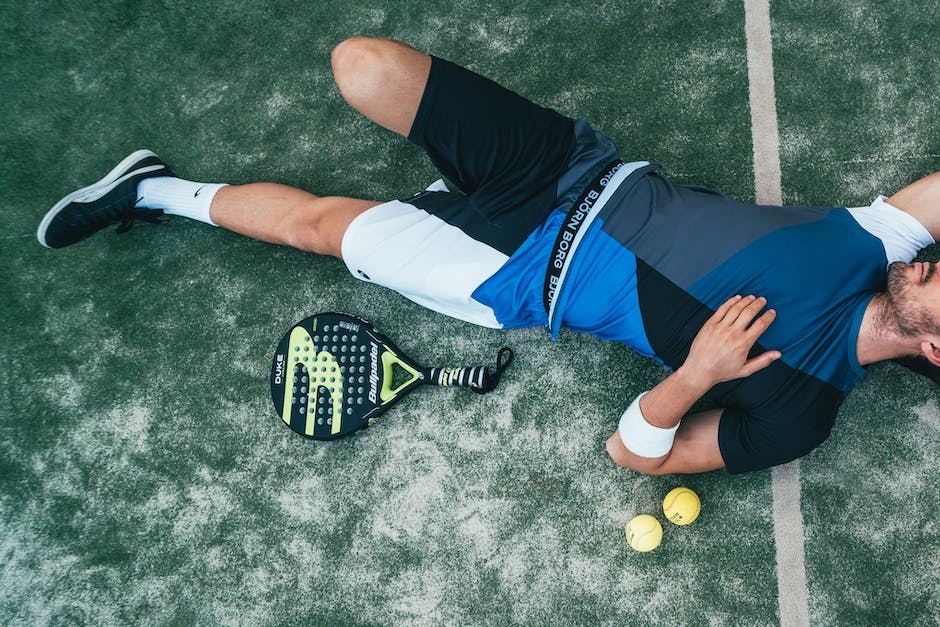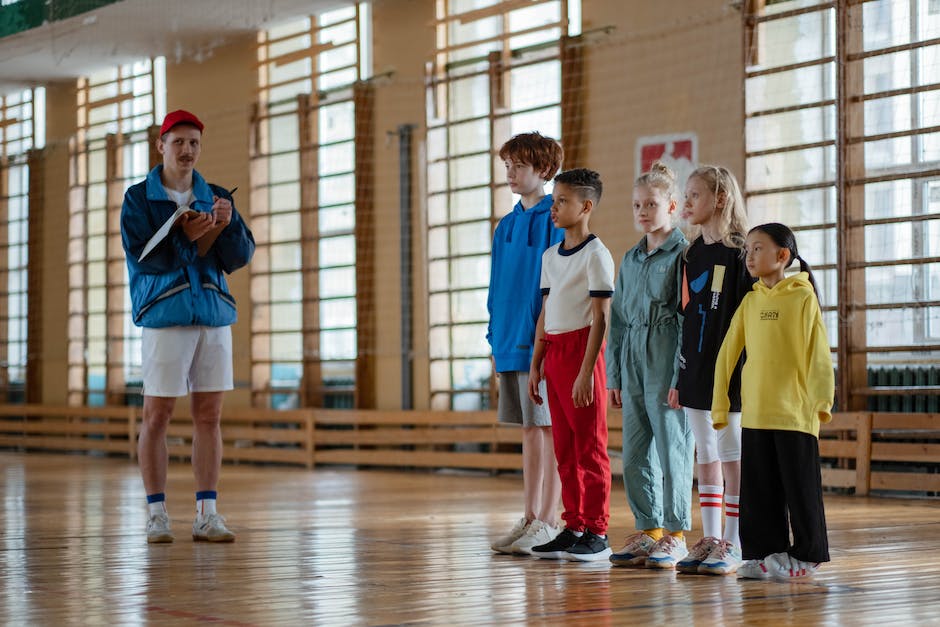Table of Contents
- Introduction
- The Importance of Incorporating Mindfulness Practices in Physical Education
- Exploring Alternative Sports and Activities for Inclusive Physical Education
- Integrating Technology in Physical Education: Enhancing Learning and Engagement
- Promoting Social and Emotional Learning through Team Sports in Physical Education
- Q&A
- Conclusion
Unlocking Potential Through Movement
Introduction
Introduction:
Reimagining Physical Education: The Role of Sports in Holistic Development
Physical education plays a crucial role in the overall development of individuals, particularly in their formative years. It goes beyond mere physical fitness and encompasses various aspects of holistic development, including social, emotional, and cognitive growth. Sports, as a fundamental component of physical education, offer unique opportunities for individuals to develop essential life skills, foster teamwork, enhance self-confidence, and promote overall well-being. This article explores the significance of reimagining physical education and highlights the pivotal role that sports play in nurturing holistic development among individuals.
The Importance of Incorporating Mindfulness Practices in Physical Education

Physical education is an essential component of a well-rounded education. It not only promotes physical fitness but also contributes to the holistic development of students. Traditionally, physical education has focused primarily on sports and physical activities. However, there is a growing recognition of the importance of incorporating mindfulness practices into physical education to enhance the overall well-being of students.
Mindfulness, rooted in ancient Buddhist traditions, is the practice of paying attention to the present moment without judgment. It involves being fully aware of one’s thoughts, feelings, and bodily sensations. Research has shown that mindfulness practices have numerous benefits for individuals of all ages, including reduced stress, improved focus and attention, increased self-awareness, and enhanced emotional well-being.
Incorporating mindfulness practices into physical education can have a profound impact on students’ overall well-being. By teaching students to be present in the moment and to pay attention to their bodies, physical education teachers can help students develop a deeper connection with themselves. This can lead to increased self-awareness and self-acceptance, which are crucial for building a positive self-image and developing healthy relationships with others.
Furthermore, mindfulness practices can help students manage stress and anxiety. In today’s fast-paced and highly demanding world, many students experience high levels of stress. By teaching students mindfulness techniques such as deep breathing and body scans, physical education teachers can provide them with valuable tools to cope with stress and promote relaxation. This can have a significant impact on students’ mental health and overall well-being.
In addition to promoting mental well-being, mindfulness practices can also enhance physical performance. By teaching students to be fully present in their bodies, physical education teachers can help them improve their focus and concentration. This can lead to better performance in sports and physical activities, as students are able to fully engage in the task at hand and make more precise movements. Moreover, mindfulness practices can help students develop a greater sense of body awareness, which is essential for preventing injuries and promoting proper alignment and posture.
Incorporating mindfulness practices into physical education does not mean replacing sports and physical activities. On the contrary, mindfulness practices can complement and enhance traditional physical education programs. By incorporating short mindfulness exercises at the beginning or end of each class, physical education teachers can create a more balanced and holistic learning experience for their students.
Furthermore, mindfulness practices can be integrated into sports training to help athletes improve their performance. By teaching athletes to be fully present in their bodies and to focus on their breath, coaches can help them develop a greater sense of body awareness and control. This can lead to improved coordination, balance, and agility, which are essential for success in sports.
In conclusion, incorporating mindfulness practices into physical education is crucial for promoting the holistic development of students. By teaching students to be present in the moment and to pay attention to their bodies, physical education teachers can help them develop self-awareness, manage stress, and enhance their overall well-being. Moreover, mindfulness practices can improve physical performance by enhancing focus, concentration, and body awareness. By reimagining physical education and incorporating mindfulness practices, we can create a more balanced and holistic approach to physical education that benefits students both mentally and physically.
Exploring Alternative Sports and Activities for Inclusive Physical Education
Physical education is an essential component of a well-rounded education, as it promotes physical fitness, social interaction, and overall well-being. However, traditional physical education programs often focus solely on competitive team sports, leaving many students feeling excluded and disengaged. In recent years, there has been a growing movement towards reimagining physical education to be more inclusive and holistic, incorporating a wider range of sports and activities that cater to the diverse needs and interests of all students.
One of the key aspects of reimagining physical education is the exploration of alternative sports and activities. These alternative sports go beyond the traditional team sports like basketball, soccer, and volleyball, and offer students a chance to engage in activities that they may find more enjoyable and fulfilling. By providing a variety of options, physical education teachers can tap into the unique talents and interests of each student, fostering a sense of belonging and empowerment.
One such alternative sport gaining popularity is yoga. Yoga is a mind-body practice that combines physical postures, breathing exercises, and meditation. It not only improves flexibility, strength, and balance but also promotes mental well-being and stress reduction. Incorporating yoga into physical education classes can help students develop body awareness, mindfulness, and self-regulation skills. Moreover, yoga is accessible to students of all abilities, making it an inclusive activity that can be enjoyed by everyone.
Another alternative activity that can be included in physical education classes is dance. Dance is a form of self-expression that combines movement, rhythm, and creativity. It not only improves cardiovascular fitness and coordination but also enhances self-confidence and body image. By incorporating different dance styles such as hip-hop, ballet, or contemporary, physical education teachers can cater to the diverse interests and abilities of their students. Dance also provides an opportunity for students to collaborate and communicate effectively, fostering social interaction and teamwork.
In addition to yoga and dance, adventure sports and outdoor activities can also be included in physical education programs. These activities, such as rock climbing, hiking, or kayaking, provide students with opportunities to challenge themselves physically and mentally while enjoying the beauty of nature. Adventure sports promote problem-solving skills, risk assessment, and resilience, all of which are essential for holistic development. Moreover, these activities encourage students to develop a sense of environmental stewardship and appreciation for the outdoors.
Furthermore, martial arts can be a valuable addition to physical education classes. Martial arts, such as karate, taekwondo, or judo, not only improve physical fitness, strength, and coordination but also promote discipline, self-control, and respect. Martial arts teach students important life skills such as perseverance, focus, and goal-setting. Moreover, they provide a safe and structured environment for students to learn self-defense techniques and build self-confidence.
In conclusion, reimagining physical education to be more inclusive and holistic involves exploring alternative sports and activities that cater to the diverse needs and interests of all students. By incorporating activities such as yoga, dance, adventure sports, and martial arts, physical education programs can provide students with a well-rounded experience that promotes physical fitness, social interaction, and overall well-being. These alternative sports not only offer a wider range of options but also foster a sense of belonging and empowerment among students. By embracing these alternative sports, physical education can truly play a transformative role in the holistic development of students.
Integrating Technology in Physical Education: Enhancing Learning and Engagement
Physical education has long been a staple in school curriculums, aiming to promote physical fitness and overall well-being among students. However, in recent years, there has been a growing recognition of the need to go beyond traditional approaches and embrace innovative methods to enhance learning and engagement in physical education. One such approach is the integration of technology into physical education classes.
Technology has become an integral part of our daily lives, and its potential to transform education is undeniable. In the context of physical education, technology offers a range of possibilities to make classes more interactive, engaging, and effective. From wearable devices to virtual reality simulations, technology can provide students with new ways to learn and experience sports.
One of the most significant benefits of integrating technology into physical education is the ability to track and monitor students’ progress. Wearable devices, such as fitness trackers and heart rate monitors, can provide real-time data on students’ physical activity levels, heart rate, and calories burned. This data can be used by both students and teachers to set goals, track progress, and make informed decisions about their fitness routines.
Moreover, technology can also enhance the learning experience by providing students with access to a wealth of information and resources. With the internet at their fingertips, students can research different sports, learn about proper techniques and strategies, and even watch professional athletes in action. This not only expands their knowledge but also inspires them to strive for excellence in their own athletic pursuits.
Virtual reality (VR) is another technology that holds great promise for physical education. By immersing students in realistic virtual environments, VR can provide them with unique opportunities to practice and refine their skills. For example, students can simulate playing a soccer match or running a marathon, allowing them to experience the physical and mental challenges associated with these activities. This hands-on approach not only enhances learning but also fosters a deeper understanding and appreciation for sports.
In addition to improving learning outcomes, technology can also increase student engagement in physical education classes. Traditional physical education classes often follow a one-size-fits-all approach, which may not cater to the diverse interests and abilities of students. By incorporating technology, teachers can offer a more personalized and inclusive learning experience.
For instance, interactive gaming systems, such as Wii Fit or Xbox Kinect, can turn physical education into a fun and interactive experience. These systems allow students to engage in virtual sports and activities, providing a level of excitement and competition that traditional classes may lack. This gamification of physical education not only motivates students to participate but also helps them develop important skills such as teamwork, problem-solving, and decision-making.
However, it is important to note that while technology can greatly enhance physical education, it should not replace the importance of face-to-face interactions and physical activity. Technology should be seen as a tool to supplement and enhance traditional teaching methods, rather than a substitute for them.
In conclusion, integrating technology into physical education has the potential to revolutionize the way we teach and learn sports. From tracking progress to providing access to information and resources, technology offers numerous benefits for both students and teachers. By embracing technology, we can create a more engaging, inclusive, and effective physical education experience that promotes holistic development among students.
Promoting Social and Emotional Learning through Team Sports in Physical Education
Promoting Social and Emotional Learning through Team Sports in Physical Education
Physical education is an essential part of a well-rounded education, and it goes beyond just teaching students how to be physically active. It also plays a crucial role in promoting social and emotional learning, particularly through team sports. By participating in team sports, students have the opportunity to develop important life skills, such as teamwork, communication, and resilience.
One of the key benefits of team sports in physical education is the promotion of teamwork. When students engage in team sports, they learn how to work together towards a common goal. They understand the importance of cooperation and collaboration, as they rely on each other’s strengths and abilities to achieve success. Through this process, students develop a sense of belonging and camaraderie, as they become part of a team that supports and encourages one another.
Communication is another vital skill that is fostered through team sports. In order for a team to function effectively, clear and effective communication is essential. Students learn how to communicate with their teammates, whether it be through verbal cues, hand signals, or non-verbal communication. They also learn how to listen and respond to their teammates’ needs and instructions. These communication skills are transferable to other areas of life, such as school projects, work environments, and personal relationships.
Participating in team sports also helps students develop resilience. In any sport, there are bound to be challenges and setbacks. Whether it’s losing a game, facing a tough opponent, or dealing with injuries, students learn how to bounce back from adversity. They develop a growth mindset, understanding that failure is not the end, but rather an opportunity for growth and improvement. This resilience carries over into other aspects of their lives, as they learn to persevere through challenges and setbacks.
Furthermore, team sports in physical education provide a platform for students to develop their social skills. They learn how to interact with their peers, both on and off the field. They learn how to respect and appreciate each other’s differences, as they work towards a common goal. They also learn how to resolve conflicts and solve problems in a constructive manner. These social skills are crucial for building positive relationships and navigating social situations throughout their lives.
In addition to promoting social and emotional learning, team sports in physical education also have numerous physical benefits. Regular participation in team sports helps students improve their cardiovascular fitness, muscular strength, and overall physical health. It also helps them develop important motor skills, such as coordination, agility, and balance. These physical benefits contribute to their overall well-being and can have a positive impact on their academic performance as well.
In conclusion, team sports in physical education play a vital role in promoting social and emotional learning. Through participation in team sports, students develop important life skills such as teamwork, communication, resilience, and social skills. These skills are transferable to other areas of their lives and contribute to their overall holistic development. Furthermore, team sports also provide numerous physical benefits, enhancing students’ physical health and well-being. Therefore, it is crucial to prioritize team sports in physical education to ensure that students receive a well-rounded education that fosters their social, emotional, and physical development.
Q&A
1. What is the concept of reimagining physical education?
Reimagining physical education involves transforming traditional approaches to focus on holistic development, incorporating sports and other activities to promote physical, mental, and social well-being.
2. How does sports contribute to holistic development?
Sports contribute to holistic development by promoting physical fitness, enhancing mental well-being, fostering social skills, teaching teamwork and leadership, instilling discipline, and promoting overall personal growth.
3. What are the benefits of reimagining physical education?
Reimagining physical education brings numerous benefits, including improved physical fitness, enhanced mental health, increased social interaction, better academic performance, improved self-esteem, and the development of lifelong healthy habits.
4. How can reimagining physical education be implemented?
Reimagining physical education can be implemented by incorporating a variety of sports and activities into the curriculum, providing opportunities for student choice and autonomy, promoting inclusivity and diversity, integrating technology, and collaborating with community organizations and sports clubs.
Conclusion
In conclusion, reimagining physical education involves recognizing the role of sports in holistic development. Sports not only promote physical fitness but also contribute to social, emotional, and cognitive development. By incorporating a variety of sports activities, emphasizing teamwork, fostering sportsmanship, and promoting inclusivity, physical education programs can effectively support the holistic development of students. This approach can lead to improved overall well-being and lifelong engagement in physical activity.





